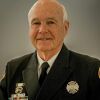Mobile Food Preparation Vehicles (MFPV) or, as most of us refer to them, food service trucks are ubiquitous. They are found throughout the country at most every community event, county fair, church festival or, in some cases, even at wedding receptions and company picnics. While most food service trucks cater to fast food, some specialize in quality restaurant fare or ethnic cuisines.
I addressed the issues of fighting a fire in a food service truck in one of my previous columns, “How to fight a food truck fire.” That piece discussed many of the hazards we encounter when fire strikes one of these vehicles, especially when it’s one of several such trucks in a relatively confined area near a crowd of customers or onlookers.
But another problem seems to have emerged regarding inspection of these vehicles before they set up shop, especially at smaller events. How does the local fire department have a chance to inspect these food trucks for safety when they appear in their jurisdiction, mostly unannounced or on weekends? This is especially true if they are there for a short period of time, perhaps as little as three to eight hours.
To complicate the issue even more, some trucks have been designed and built specifically for the purpose of being a mobile food preparation vehicle – and some have not. A true MFPV usually has exhaust hoods, suppression systems, emergency gas shutoffs and two means of egress for employees. However, other food service trucks may literally be “homemade” conversions of panel or delivery trucks with very few built-in safety features.
Crafting solutions on a smaller scale
Large cities license and limit the locations where food service trucks can operate. They are usually in areas where both office workers and tourists congregate and can have easy access to this food.
For example, in the Tribeca neighborhood in Lower Manhattan, New York, there is an area set aside for food service trucks amid multiple office buildings and several parks that offer great views of the Hudson River for tourists. For a jurisdiction like New York, the food trucks are inspected for both health and fire safety issues before they are certified to operate on their streets.
So how do we in the fire service afford our citizens this same level of protection when our population is perhaps 10,000 or smaller?
One forward-thinking solution for this dilemma comes from the combined efforts of the Ohio State Fire Marshal’s Office (SFMO) and a program being discussed by several departments in counties surrounding the Greater Cincinnati area. The SFMO recently developed a “Mobile Food Unit Checklist” to provide certified fire safety inspectors with a comprehensive approach to these fire safety issues.
The list includes such items as checking for carbon monoxide detectors; portable fire extinguishers; the condition of the electric wiring and power generators; “no smoking” signs near both the compressed liquefied petroleum (LP) gas appliances and storage area; the condition of cooking equipment (i.e., commercial or improvised); the location and enclosures protecting the LP gas cylinders, including piping and connections; as well as the separation distance between food service trucks at any event.
The Arizona Fire Marshal’s Association has created a similar checklist, and the NFPA offers information about MFPVs here.
Going one step further
At a meeting last year hosted by the City of Springdale (Ohio) Fire Department, chief officers and fire inspectors from throughout the southwest Ohio region discussed several ideas to revise and enhance the use of the SFMO checklist. Among those ideas was that MFPV’s should have an annual inspection by an Ohio-certified fire safety inspector. While this idea is still under consideration, here is an outline of the general concept.
After passing that inspection, an annual decal could be issued for display on the food service truck that indicates that it had received and passed a fire inspection consisting of the latest version of the SFMO checklist. If the idea is adopted, then a copy of the annual fire inspection could also be available from the food service truck operator upon request by any fire inspector or fire chief.
However, this inspection process wouldn’t prevent a certified fire inspector in one jurisdiction from conducting a spot check inspection on a food truck arriving from another jurisdiction to verify that the safety equipment is still operational and food preparation areas meet the required standards. Due to the short duration of most events, the annual decal might at least assure the local fire service, especially those without their own certified fire safety inspectors, that a truck has passed an annual inspection.
While this remains a unique approach for mobile food truck fire inspections, the concept has yet to be adopted and further discussions are ongoing. One concern to be addressed is whether the concept would inhibit larger cities or fire districts from their own inspection, zoning restrictions and licensing process for long-term food service trucks at designated locations in their city.
Ordering up safety
Food trucks may not be on every corner, but they definitely aren’t going anywhere any time soon, and annual fire inspections could offer some added protection against hazards. Also, if a fire strikes, both firefighters and the public – especially in smaller communities – could have more confidence that vital protection features such as a suppression system or fire extinguishers are onboard for controlling any incipient fire.
Stay safe!



